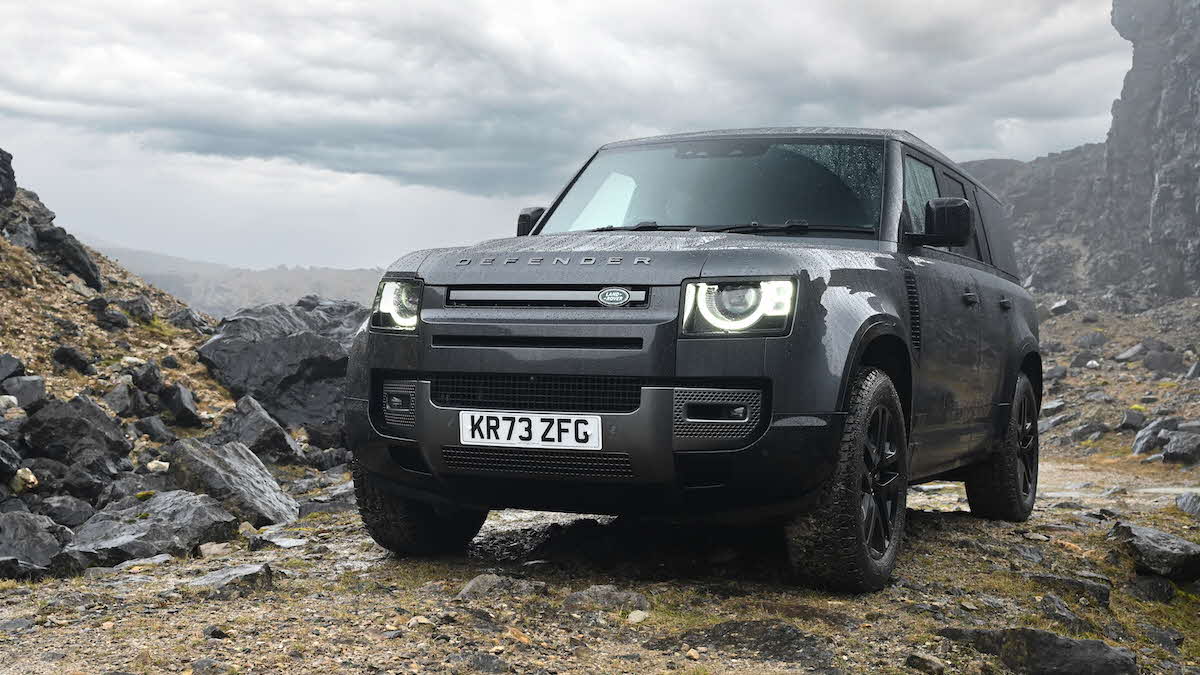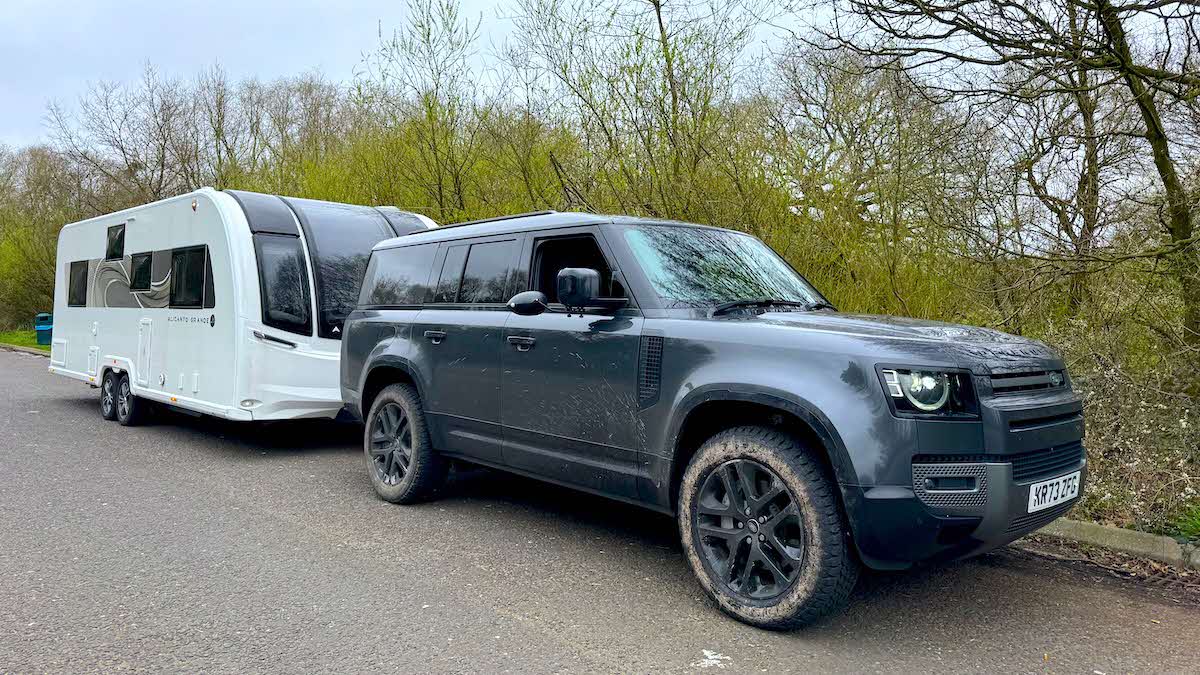New and used
Browse for bargains from thousands of new and used vehicles for sale, or sell your caravan, motorhome, towcar or accessories.
Buy and sell nowJames Batchelor takes the long-wheelbase version of a famed off-roader on an extended towing test

Cars like the Land Rover Defender need little introduction. While it has become a fashion icon in recent times, its status as an off-the-road vehicle is unquestioned – and the same could be said about its workhorse credentials, which, naturally, include towing. The last time we drove a Defender (a short-wheelbase, 90) was in the Club’s Towcar of the Year Awards – we were keen to put one to a longer, real-world test.
No one can say you’re stuck for choice with the Defender. There are petrols and diesels all with mild-hybrid technology, as well as a frugal plug-in hybrid, and even a V8. And you have a choice of three body lengths and an assortment of trims – there’s even a commercial version.
We’ve plumped for the newest of the offerings for this test: the (very) long-wheelbase ‘130’. But we’ve passed over the chance to drive it with the firm’s thunderous 5.0-litre supercharged V8 petrol engine, instead opting for something more suitable for caravan owners – the more modest 3.0-litre straight-six diesel.
When the ‘new’ Defender finally arrived on the scene in 2020, it was only available in short three-door ‘90’ and mid-sized five-door ‘110’ forms; these have since been joined by the 130. Once upon a time with the original Defender (or just the ‘Land Rover’ Series models), those numbers denoted the length of the wheelbase in inches, but now they’re just handy ways of marking out the three different cars. In fact, the 130 actually has the same wheelbase as the 110 – the extra length is to be found behind the rear wheels.
And my, it’s a long car. The 5.1m-long 130 (nearly 5.4m with the space wheel) offers loads of room and practicality for those who crave it. That elongated rear-end allows an extra pair of seats to be placed in the boot – or, if you opt for the Outbound model, like we have here (dispensing with the extra seats), you have a huge loading area of 1,329 litres or a colossal 2,516 litres with the regular back seats folded flat.
This Outbound trim is perfectly designed for “overland exploration”, says Land Rover. As such, not only does it dispense with seats six and seven in the boot, but also plush leather seats (instead getting animal-free leather trim), and the rearmost side windows. The interior also gains hard-wearing rubber matting as well as extra lashing points and nets to keep items secure in the boot. But there are still luxuries in the form of 12-way memory electric front seats, a posh Meridian sound system and 20in wheels fitted as standard.
Although it has more room in the stern, the 130 shares the same interior up front as its smaller sisters. That means a beautifully considered cabin that mixes luxury with industrial design; all cars get a screen for the dials and a 13in curved infotainment display that’s nicely designed and works very well.
Naturally, there’s a raft of optional extras available. Different packs neatly bundle everything together but these can get expensive – although the £1,415 Detachable Towing Pack is reasonably priced. It lumps together a number of features such as Terrain Response 2, along with Advanced Tow Assist and a detachable towbar. We found fitting the latter could be a pain, though – an electrically deployable one would be preferable considering the Defender’s price tag.
Land Rover has done a fine job of making the Defender drive differently from its more sports utility vehicle-like offerings such as the Discovery. There’s a robust seriousness to the way the Defender gets down the road – it always feels like a large off-roader, and while the air suspension does a remarkable job of keeping such a hefty car stable, it doesn’t ride with the aplomb of a Range Rover. But nor should it, and while it may not have the fluidity of a Discovery or a BMW X7 down a country road, it handles tidily and precisely.
The 296bhp 3.0-litre straight-six mild-hybrid diesel is a fine fit for such a large car – it’s punchy when you need it to be, while always remaining smooth and unflustered, and the eight-speed automatic gearbox shifts silently.
Should you venture off-road, a plethora of different driving modes should cover most bases, although the air suspension will probably be most appreciated by owners when it automatically lowers the car to aid entry and exit.

When we hitched up to a suitable caravan, a couple of things took us by surprise. Firstly, attaching towing mirrors was fiddlier than we expected it to be, and if you’re the type of person who likes to hitch up when you have the tailgate open, the Defender’s side-opening rear door makes this tricky.
Once you’re hitched up, though, it’s clear Land Rover has really thought about the types of people who may own a Defender. All-round cameras offer great visibility during low speed manoeuvring,
and we were really surprised to see a dedicated ‘towing’ menu in the infotainment system which allows you to input key details about your trailer – such as the number of wheels and length – to optimise the car’s driving characteristics.
Compared with the 90 D250 that featured in the Club’s Towcar of the Year 2024 competition, the 130 D300 seemed more at home with a caravan on the back. That’s due to its length and how it feels more stable during quick directional changes. There was only a hint of caravan wobble during our test on a dual carriageway, but it was to be expected as the whole outfit was rather a long one. Crosswinds tried their best to destabilise the outfit, but on the whole the Defender felt very secure and comfortable.
The Defender 110 will cater for most buyers, but for those who need space without sacrificing luxury, image and off-road ability, the 130 is a true champ.